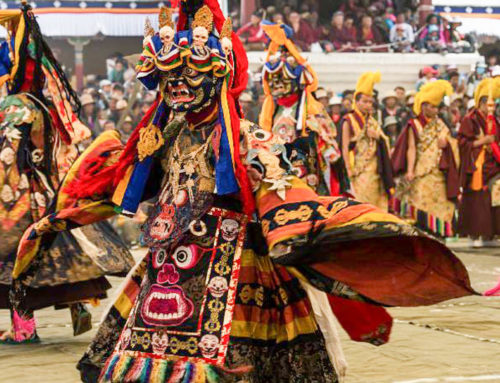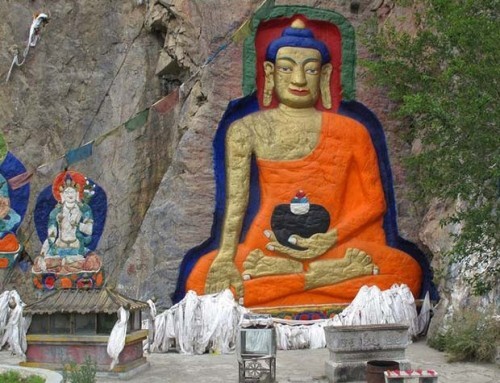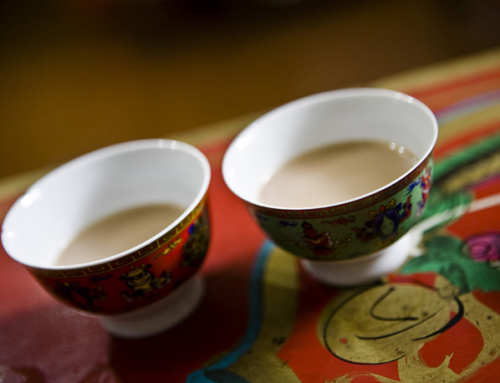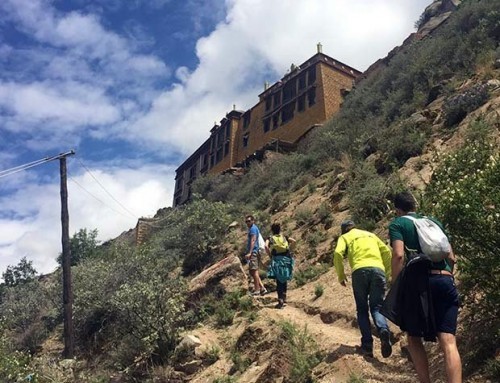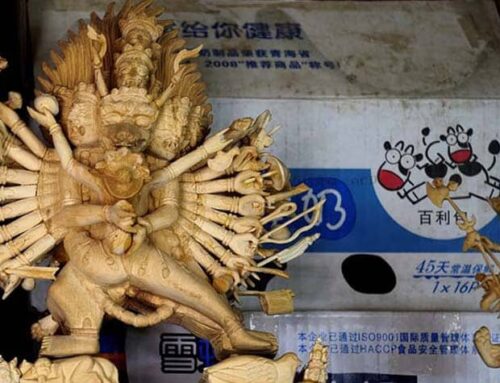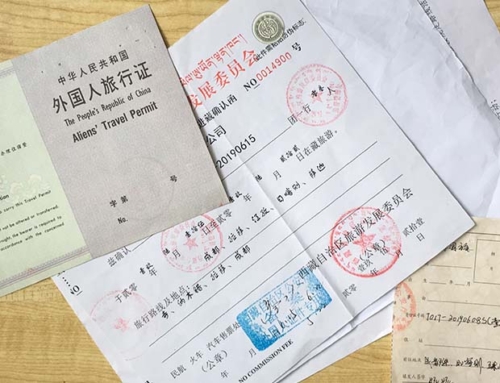Tibetan Momo, the exquisite dumplings hailing from the majestic Tibetan plateau, are more than just a dish; they represent a delightful journey into the heart of Tibetan culture and gastronomy. In this culinary adventure, we’ll explore the history, preparation methods, and the diverse world of Tibetan Momo. These delectable dumplings are more than just food; they are a cultural and sensory experience that transcends borders and has captured the hearts and taste buds of people worldwide.
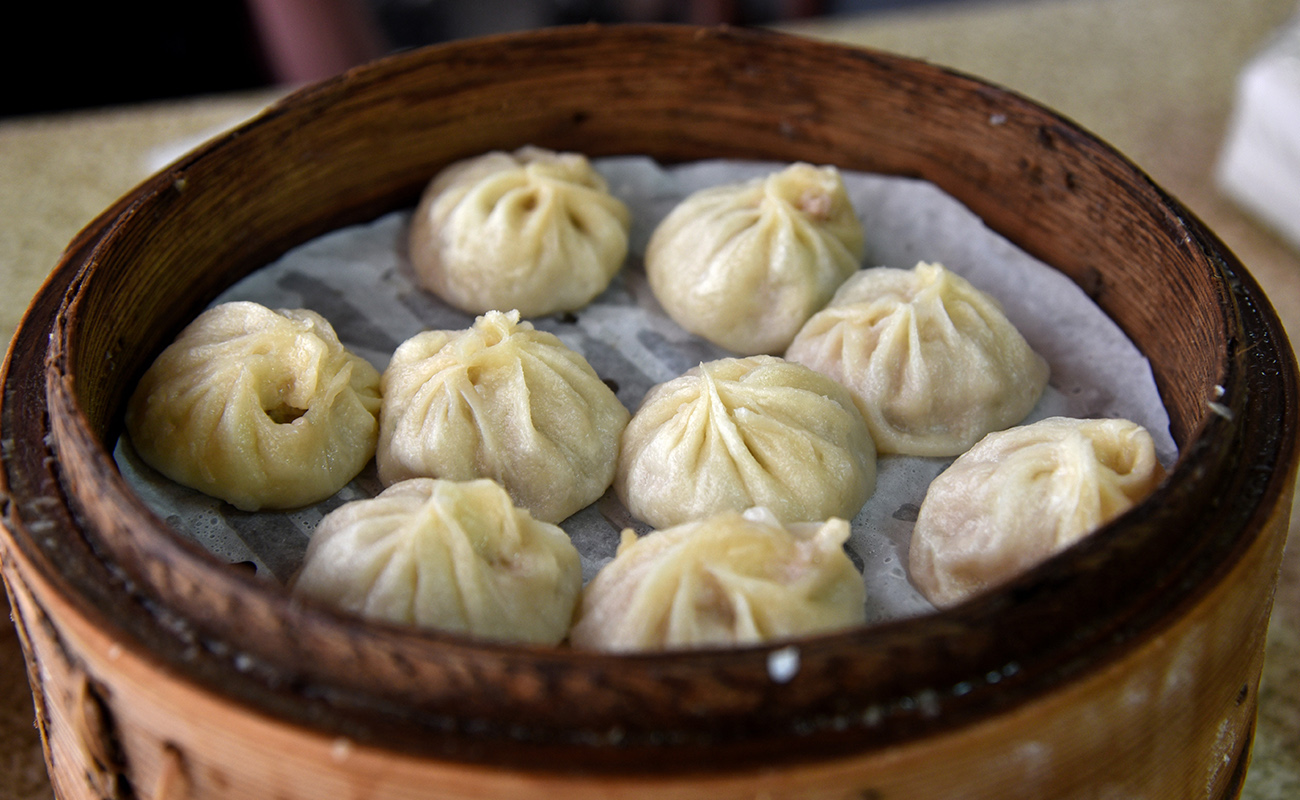
The History and Cultural Significance of Tibetan Momo
Tibetan Momo is a reflection of Tibet's rich cultural heritage. It is believed that Momo originated in Tibet centuries ago and has since become an integral part of Tibetan cuisine. Traditionally, Momo was prepared and enjoyed during festivals and special occasions, bringing families together in the kitchen. The act of making Momo is a social and communal experience, fostering unity and togetherness. It's not merely a dish; it's a symbol of tradition and shared moments.
The Versatile Varieties: Meat, Vegetarian, and Beyond
Tibetan Momo has evolved to cater to diverse tastes and dietary preferences. While yak beef Momo is the traditional favorite, there is a world of possibilities when it comes to Momo fillings.
- Yak Beef Momo: The quintessential Tibetan Momo is typically filled with yak beef, which is rich and flavorful.
- Vegetarian Momo: For those who prefer a vegetarian option, Momo can be prepared with a variety of vegetables, creating a colorful and nutritious filling.
- Tofu Momo: Tofu lovers can rejoice as Momo can also be made with tofu, providing a delightful blend of textures and flavors.
- Cheese Momo: If you're a cheese enthusiast, some Tibetan restaurants even offer cheese-filled Momo, creating a unique fusion of Tibetan and international flavors.
Ingredients and Preparation for Momo Dough
The foundation of every good Momo is its dough. To prepare the perfect Momo dough, you'll need:
- Wheat Flour: Start with 600 grams of wheat flour. Wheat flour is the primary ingredient for making Momo dough.
- Salt: Add a pinch of salt to the flour before mixing it with water. The salt enhances the flavor of the dough.
The Momo dough is prepared by adding water gradually to the flour and kneading it until it becomes firm and supple. The dough should be smooth and flexible, ensuring the Momo's delicate yet robust outer layer.
Crafting the Perfect Filling
Momo's secret lies in its savory filling. To create a mouthwatering Momo filling, you'll need:
- Ground Meat: The meat can be any type, including beef, mutton, or chicken. You'll need about 600 grams of ground meat.
- Green Onions: Chop three pieces of green onions into small pieces.
- Soy Sauce: Add two tablespoons of soy sauce for a delightful umami flavor.
- Salt: Use half a tablespoon of salt for seasoning.
- Bouillon Cube: Mince the bouillon cube and add it to the mixture. Be careful not to add too much, as it can make the filling overly salty.
- Vegetable Oil: Incorporate two tablespoons of vegetable oil to keep the filling moist.
- Sichuan Pepper: For a hint of spice and aroma, add a pinch of ground Sichuan pepper.
- Water: To ensure the filling is juicy, add 125 milliliters of water and mix it thoroughly. The water will be absorbed by the meat, creating a flavorful and succulent filling.
The key to a perfect Momo filling is to mix the ingredients thoroughly, ensuring an even distribution of flavors. It's not just about the ingredients; it's about the art of blending them harmoniously.
Shaping the Momo: Artistry in Your Hands
Shaping Momo is an art in itself. Whether you opt for circular or crescent shapes, creating the perfect Momo shape is an art that you can master with practice. Let's explore the two main shaping techniques:
- Circular Momo: Place the flattened dough in your left palm (or your dominant hand). Add a half-spoon of filling to the center. Pinch the edges of the dough together while rotating it in a circular motion until it forms a round Momo.
- Crescent Momo: Start by placing the flattened dough in your hand, adding a half-spoon of filling to one side. Pinch and fold the dough to create a crescent shape, ensuring that it's tightly sealed.
The Art of Steaming Momo
Steaming is the most common and beloved way of preparing Tibetan Momo. To steam your Momo to perfection, follow these steps:
- Apply a thin layer of vegetable oil to the steamer's surface to prevent Momo from sticking.
- Place the Momo in the steamer, ensuring they are not too close to each other.
- Steam the Momo above boiling water for approximately 15 minutes. To check if they are done, touch a Momo; if it's not sticky, it's ready to be served.
A Crispy Twist: Frying Momo to Perfection
Fried Momo offers a delightful twist to the traditional steamed version. Here are two methods to fry Momo:
- Pan-Fried Momo: Start by adding oil to a pan and frying the Momo's base until it turns golden brown. Once the base is crispy, add water and cook the Momo until the water evaporates.
- Steam and Fry: If you have leftover Momo, you can steam them first and then fry them in a pan. This method ensures that your Momo are cooked through and crispy on the outside.
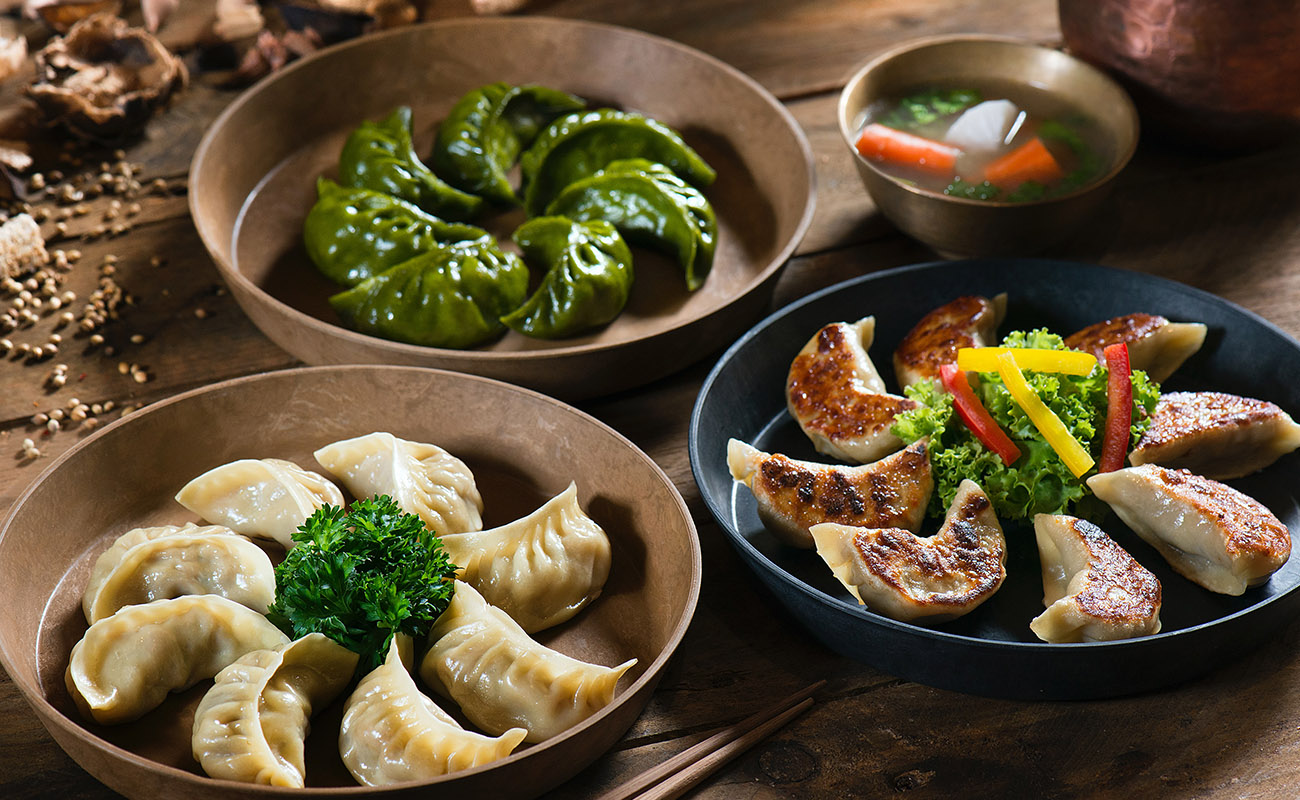
Momo in Broth: The Art of Soup Momo
Soup Momo, also known as Tsetse Momo, is a delightful variation of the traditional Momo. To prepare Soup Momo:
- Start by making a broth, either vegetable or bone broth.
- Once the broth is ready, remove any bones and impurities.
- Add salt to the broth and bring it to a boil.
- Gently place the Momo in the boiling broth, stirring to prevent sticking.
- Lower the heat, cover, and let it simmer for about 10 minutes.
- The Momo is ready when they float to the top of the broth.
Serving Momo with Complimentary Delights
Momo is often served with complementary side dishes that enhance the dining experience. These include:
- Bone Broth: A rich bone broth complements Momo's flavors and is sometimes used as the steaming medium.
- Chili Paste: A spicy chili paste adds a delightful kick to each bite of Momo.
- Radish Pickle: Pickled radishes provide a refreshing contrast to the savory Momo.
- Soy Sauce: A classic dip for Momo, soy sauce adds depth to the flavor.
Characteristics of an Exceptional Momo
What makes a Momo exceptional? The perfect Momo has:
- A delicate yet firm outer shell that holds in the flavorful juices.
- A burst of delicious juices when you take the first bite.
- Momo is best when hot and steamy, as the flavors are at their peak.
Best Places to Savor Tibetan Momo in Lhasa
Lhasa, the heart of Tibet, offers a plethora of places to savor authentic Tibetan Momo. Some of the top spots include:
- Rabsel Momo: Known for its traditional yak beef Momo, this place captures the essence of Tibetan flavors.
- Chagtha Momo: A local favorite, this eatery offers an array of Momo variations to suit every palate.
- Ani Momo: A hidden gem serving delectable Momo, both traditional and contemporary.
- Tibetan Family Kitchen: A must-visit for those seeking an authentic Tibetan dining experience.
Conclusion
Tibetan Momo is more than just a dumpling; it's a cultural journey and a sensory delight. Whether you prefer the traditional yak beef Momo, a vegetarian option, or a creative fusion, Momo offers an experience that transcends borders. Share these delectable dumplings with loved ones, and you'll not only satisfy your taste buds but also celebrate the spirit of togetherness that Momo embodies.
Frequently Asked Questions
Can I make vegetarian Momo at home?
Yes, you can create delicious vegetarian Momo with a variety of vegetables and seasonings.
What's the secret to a perfect Momo dough?
The key is to knead the dough until it's smooth and flexible, ensuring it's not too dry or too wet. Wrap the dough in plastic bag for some time.
What are the best dipping sauces for Momo?
Momo pairs wonderfully with chili paste, soy sauce, and radish pickle.
Where can I savor the best Tibetan Momo in Lhasa?
Lhasa offers a range of Momo hotspots, including Rabsel Momo, Chagtha Momo, Ani Momo, and Tibetan Family Kitchen, all known for their authentic flavors.
How do I know if Momo is cooked through when steaming?
To check if Momo is done, touch one; if it's not sticky, it's ready to be served.
For a journey into the heart of Tibet through its delectable cuisine, make Momo a part of your culinary adventures.
Explore Tibet with a local Tibetan Travel Agency
If you're looking to explore Tibet, starting your journey with a reputable Tibetan travel agency in Tibet is crucial. Tibet Travel & Tours is a great choice to begin your adventure with their extensive knowledge of the region and commitment to responsible tourism.
Their Tibet tour packages cater to a range of interests and budgets, making it easy to plan a trip that suits your needs. Before embarking on your tibet tour, it's essential to have the right Tibet travel information and necessary documents, including a Tibet travel permit.
The Tibet Travel Planner provided by i-Tibet travel is an excellent resource to plan your trip, including tips on what to pack, where to stay, and what to see.
For beginners, the "About Tibet" guide provided by i-Tibet travel offers a comprehensive overview of the region's history, culture, and top attractions. So, start your Tibet travel plan here with i-Tibet travel and discover the magic of Tibet for yourself.
About Tibet Travel & Tours
Tibet Travel & Tours is a local travel agency in Tibet that offers unique and authentic experiences to travelers from all around the world. As a leading tour operator in Tibet, we provide high-quality Tibet Travel services that are tailored to our clients' needs and preferences.
Our team of experienced and knowledgeable professionals strives to ensure that our clients have a hassle-free and memorable trip in Tibet. We specialize in various types of tours, including cultural tours, trekking and hiking tours, and adventure tours.
Our commitment to providing exceptional service has earned us a reputation as one of the best local travel agencies in Tibet. Contact us today to plan your unforgettable trip to Tibet.




